The iPhone 13 Pro Max is Apple’s 2021 top-of-the-line smartphone, powered by the A15 Bionic chipset and offering up to 1TB of internal storage. On the audio playback front, Apple partnered with Dolby Labs to deliver an immersive stereo reproduction. As for recording, the audio zoom algorithm is still implemented when filming videos.
We put the Apple iPhone 13 Pro Max through our rigorous DXOMARK Audio test suite to measure its performance both at recording sound using its built-in microphones, and at playing audio back through its speakers.
In this review, we will break down how it fared in a variety of tests and several common use cases.
Overview
Key audio specifications include:
- Two speakers (up front-firing, and bottom side-firing)
- Audio zoom
- Dolby Atmos
- Voice Isolation and Wide Spectrum microphone modes (for calls)
- User‑configurable maximum volume limit
Scoring
Sub-scores and attributes included in the calculations of the global score.
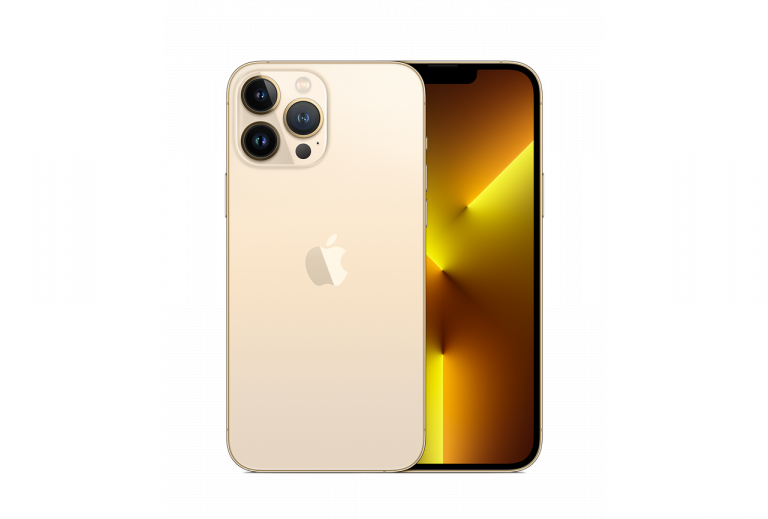
Apple iPhone 13 Pro Max


 28th
28th 19th
19thPlayback
Pros
- Very consistent performances among all attributes
- Pleasant tonal balance, with added low mid warmth with respect to previous iPhone generations
- Precise localizability and very good wideness despite stereo being inverted
Cons
- Stereo is still inverted in Music app, as in all iPhones
- Bass distortion at maximum volume
Recording
Every year Apple’s iPhone Pro Max devices improve on their predecessors in terms of Audio performance and the 13 Pro Max is no different, thanks to good performances in both Playback and Recording tests. Its speakers are extremely well suited for playing games and watching movies, thanks to excellent spatial results in all attributes (wideness, localizability, balance and distance rendering), a volume-consistent tonal balance with precise high-ends and a rich, full midrange, impactful and sharp dynamics overall, and a skillful management of sonic artifacts. The volume performance is also helpful, with a minimum volume leaving games and movies fully intelligible, a distribution from softest to loudest steps allowing the user to finely adjust the listening volume, and a satisfying maximum volume. Further, the speakers are nearly impossible to occlude during a gaming session.
The phone’s low-end extension, albeit very good, isn’t up to par with our top-scoring phones, and as with all iPhone models, when using the music app, the left and right channels are inverted by default.
As a recording device, the iPhone 13 Pro Max produces a somewhat darker timbre than the previous generations, due to a limited high-end extension and an overall lack of brightness. However, timbre remains natural, warm, and fairly consistent despite volume variations. While recording in loud environments is a commonly shared iPhone ability, the 13 Pro Max continues the tradition set by its predecessors by providing clear, precise, and rich midrange, powerful bass, a precise capture of the sound envelope, and overall an excellent resilience to high-pressure levels. Further, it offers a very interesting DSP compensation for the partial occlusion of microphones (when the phone is held with only one hand, for example). Selfie videos also fared very well in our protocol, with well-balanced midrange, and impressive wideness considering the fact that this use case is evaluated in portrait mode.
Even though it is already very good, the iPhone 13 Pro Max still has a little margin for improvement in the recording area. Its main limitation is a lack of treble information and high-end extension which, besides inducing a darker sonority, makes voices less intelligible by preventing them from rising above background noise in louder environments, thus altering the signal-to-noise ratio. Our testers also found that the device did not handle wind noise well, especially when recording with the memo app.
Test summary
About DXOMARK Audio tests: For scoring and analysis in our smartphone audio reviews, DXOMARK engineers perform a variety of objective tests and undertake more than 20 hours of perceptual evaluation under controlled lab conditions.
(For more details about our Playback protocol, click here; for more details about our Recording protocol, click here.)
The following section gathers key elements of our exhaustive tests and analyses performed in DXOMARK laboratories. Detailed performance evaluations under the form of reports are available upon request. Do not hesitate to contact us.
Playback
Apple iPhone 13 Pro Max
163
DXOMARK engineers test playback through the smartphone speakers, whose performance is evaluated in our labs and in real-life conditions, using default apps and settings.
Listen to the Apple iPhone 13 Pro Max playback performance in this comparison with some of its competitors:
Here is how the Apple iPhone 13 Pro Max performs in playback use cases compared to its competitors:

Timbre
Apple iPhone 13 Pro Max
158
The Timbre score represents how well a phone reproduces sound across the audible tonal range and takes into account bass, midrange, treble, tonal balance, and volume dependency. It is the most important attribute for playback.
The main difference to the best in class lies in the midrange frequencies which on some competitors are much fuller- and richer-sounding, with more roundness, and less nasal sounding. This results in a better user experience in both movie and music playback and an overall natural result, bright yet warm, from softest to loudest volumes.

Dynamics
Apple iPhone 13 Pro Max
149
The Dynamics score measures the accuracy of changes in the energy level of sound sources, for example how precisely a bass note is reproduced or the impact sound from drums.
Dynamic attributes, on their part, are strictly identical to the previous generation’s. The 13 Pro Max delivers good attack at soft and nominal volumes, and punch is even impactful at softer volumes thanks to the appreciably deep low-end extension. Bass precision is very good overall, albeit impaired by resonances and distortion at both nominal and maximum volumes. In this area, too, changes in volume have little impact over the consistency of the performance.
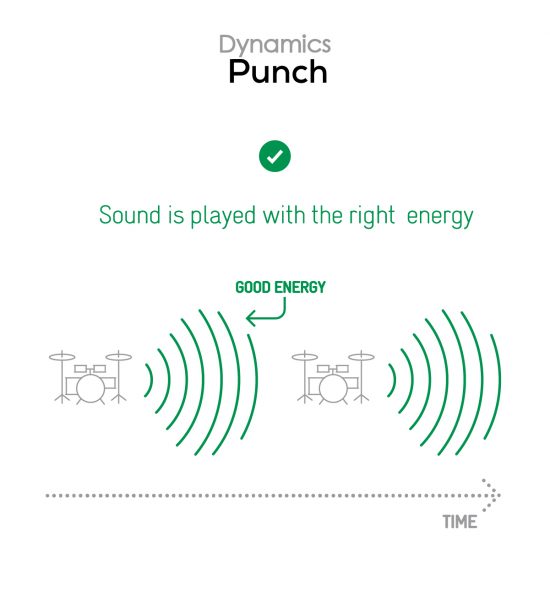
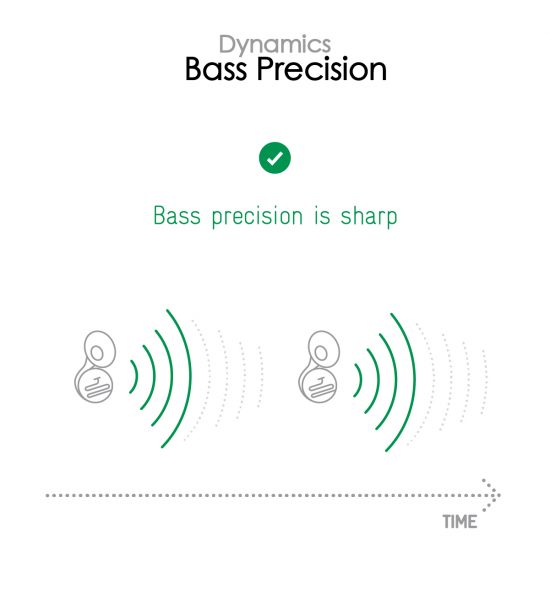

Spatial
Apple iPhone 13 Pro Max
162
The sub-attributes for spatial tests include pinpointing a specific sound's location, its positional balance, distance, and wideness.
Spatial performance is certainly the most notable evolution in respect to the previous generation. Localizability is very precise, wideness is outstanding, balance between the left and right channels is well centered, and distance rendering is very realistic for voices.

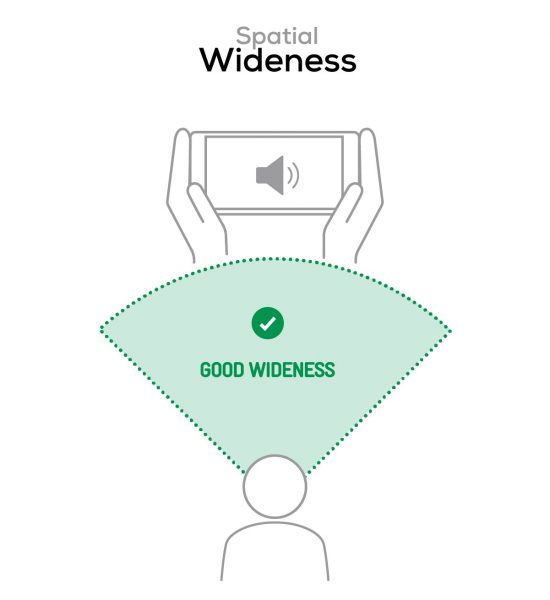
As with every other iPhone model, the stereo field is inverted when using the Music app. When using the phone in landscape mode (top of the phone is on the left), the left channel sound comes from the right side of the device, and vice versa. Because the stereo does not rotate automatically in the music player, the user has to turn the phone to an inverted landscape position (with the top of the phone on the right) in order to obtain the correct stereo orientation. But despite the inverted stereo, wideness and localizability remain excellent.

Volume
Apple iPhone 13 Pro Max
162
The Volume score represents the overall loudness of a smartphone and how smoothly volume increases and decreases based on user input.
Because of a richer and fuller frequency response, at maximum volume, the iPhone 13 Pro Max sounds perceptually louder than its predecessor. Speaking of loudness, here are a few sound pressure levels (SPL) measured when playing our sample recordings of hip-hop and classical music at maximum volume:
| Hip-Hop | Classical | |
| Apple iPhone 13 Pro Max | 72.4 dBA | 69.5 dBA |
| Google Pixel 6 Pro | 73 dBA | 69 dBA |
| Samsung Galaxy S22 Ultra (Exynos) | 74.1 dBA | 70.2 dBA |
The following graph shows the gradual changes in volume going from minimum to maximum. We expect these changes to be consistent across the range, so that all volume steps correspond to users’ expectations. Minimum volume remains well-tuned, allowing dynamic audio (such as classical music or movies) to remain fully intelligible. Further, as shown in the following graph, the volume steps distribution from softest to loudest is extremely consistent:

Artifacts
Apple iPhone 13 Pro Max
157
The Artifacts score measures the extent to which the sound is affected by various types of distortion. The higher the score, the less the disturbances in the sound are noticeable. Distortion can occur because of sound processing in the device and because of the quality of the speakers.
As in the Dynamics category, through an artifacts reading grid, the iPhone 13 Pro Max performs exactly the same as its precursor. It is quite capable of keeping undesirable sounds to a minimum, since very few artifacts are perceivable overall. All use cases fare very well, with gaming at the top of the scale.
That said, bass distortion can be perceived on specific sounds at nominal and maximum volumes. On the plus side, the noise floor is a bit lower than the iPhone 12 Pro Max’s, and the speakers are hard to occlude while gaming!
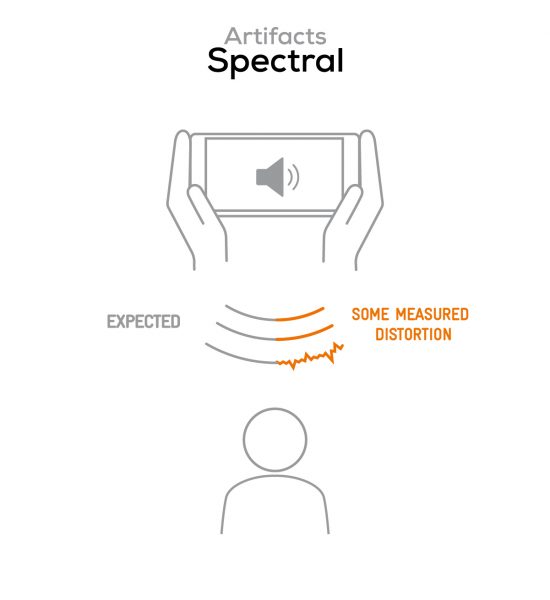
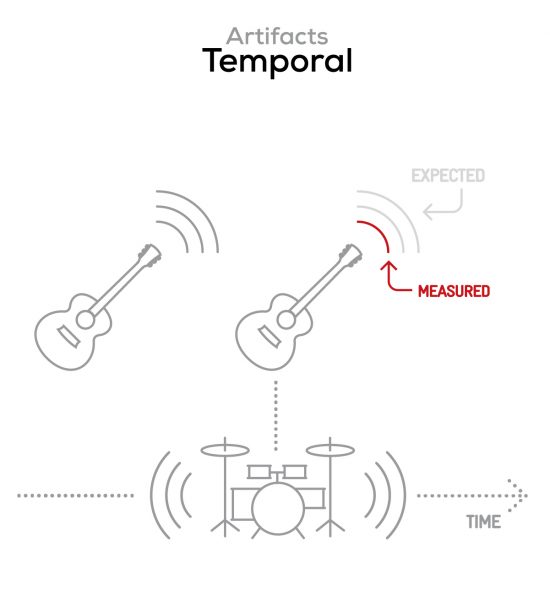
It represents the distortion and noise of the device playing our test signal (0 dB Fs, Sweep Sine in an anechoic box at 40 cm) at the device's maximum volume.
Recording
Apple iPhone 13 Pro Max
160
DXOMARK engineers test recording by evaluating the recorded files on reference audio equipment. Those recordings are done in our labs and in real-life conditions, using default apps and settings.
Here is how the Apple iPhone 13 Pro Max performs in recording use cases compared to its competitors:

Timbre
Apple iPhone 13 Pro Max
147
The Timbre score represents how well a phone captures sounds across the audible tonal range and takes into account bass, midrange, treble, and tonal balance. It is the most important attribute for recording.
As a recording device, the 13 Pro Max delivers a very good timbre performance. The rendition is natural, warm, and rather consistent, with an emphasis on the lower midrange.
Unlike in playback, recordings have a darker sonority due to a receding high-end extension and limited treble. As a result, brightness is dimmed, and vocal intelligibility is altered. In noisy surroundings, such as our urban scenario, conversations have a hard time standing out of the background noise. This problem is less noticeable in high-SPL scenarios, in which the phone demonstrates clear, precise, rich and consistent midrange, a better high-end extension, and powerful bass — without ever sounding boomy.
In life videos, memos and meeting scenarios, the phone’s frequency response generates a slightly muffled sonority with subtle resonances in the lower midrange. That said, the overall result remains natural and pleasing.

Dynamics
Apple iPhone 13 Pro Max
146
The Dynamics score measures the accuracy of changes in the energy level of sound sources, for example how precisely a voice's plosives (the p's, t's and k's, for example) are reproduced. The score also considers the Signal-to-Noise Ratio (SNR), for example how loud the main voice is compared to the background noise.
Although the iPhone 13 Pro Max seems perfectly capable of delivering an excellent dynamics performance, with its large dynamic range and reliable reactiveness, results were hindered by various factors.
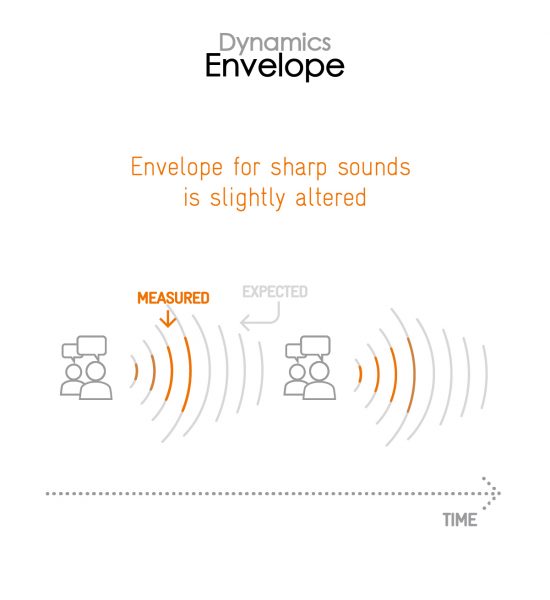
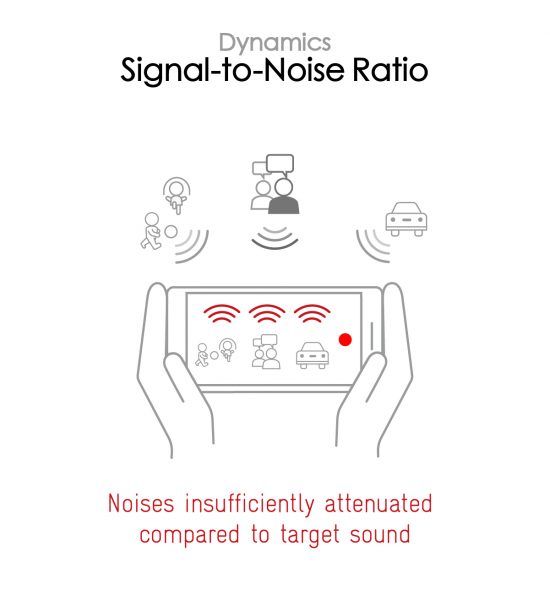
While the envelope rendition is accurate in most use cases — and especially precise in our electronic concert scenario despite very elevated sound pressure levels, attack could be sharper and snappier. In loud environments (such as a concert) the combination of dulled transients, dynamic compression and powerful bass becomes detrimental to the sound envelope as well as the punch. The aforementioned limited high-end extension is also problematic in this category: it reduces the intelligibility of vocal content, which impacts the signal-to-noise ratio sub-score.

Spatial
Apple iPhone 13 Pro Max
159
The sub-attributes for spatial tests include pinpointing a specific sound's location, its positional balance, distance, and wideness on the recorded audio files.
The iPhone 13 Pro Max turns in a good spatial performance in the recording domain. Wideness is very good across all use cases — and yes, this includes selfie videos, which exhibit impressive wideness despite their vertical orientation.
The impressive wideness performance in videos, however, does not occur in the recordings from the Voice Memos app. Voice memos and meeting recordings are all in mono and lack wideness.
As for the other spatial attributes, the timbre’s lack of clarity impacts both distance perception and localizability, which otherwise are respectively correct, and very good.

Volume
Apple iPhone 13 Pro Max
170
The Volume score represents how loud audio is normalized on the recorded files and the how the device handles loud environments, such as electronic concerts, when recording.
As always with the iPhones, volume in recorded audio is a very strong point. Voices benefit from very good loudness, and the maximum level reachable without a perceivable amount of distortion is excellent. In other words, the phone demonstrates an excellent resilience to very loud surroundings.
The loudness in the recorded files is acceptable but a bit below the best phones for recording, which results in recorded video files that have a decent albeit not optimal volume. Here are the sound levels recorded in the audio and video files, measured in LUFS (Loudness Unit Full Scale); as a reference, we expect loudness levels to be above -24 LUFS for recorded content:
| Meeting | Life Video | Selfie Video | Memo | |
| Apple iPhone 13 Pro Max | -25.5 LUFS | -22.7 LUFS | -20.1 LUFS | -18.2 LUFS |
| Google Pixel 6 Pro | -27.5 LUFS | -19.6 LUFS | -17.6 LUFS | -20 LUFS |
| Samsung Galaxy S22 Ultra (Exynos) | -28.8 LUFS | -21.7 LUFS | -21.2 LUFS | -23.9 LUFS |

Artifacts
Apple iPhone 13 Pro Max
145
The Artifacts score measures the extent to which the recorded sounds are affected by various types of distortions. The higher the score, the less the disturbances in the sound are noticeable. Distortions can occur because of sound processing in the device and the quality of the microphones, as well as user handling, such as how the phone is held.
As we were saying, the 13th Pro Max generation is even more skilled than the previous one when it comes to handling loud environment recordings: very few artifacts were spotted by our sound engineers, even in high-SPL scenarios. Occasional pumping and slight distortion were exclusively noticeable in selfie videos, triggered by shouting voices.
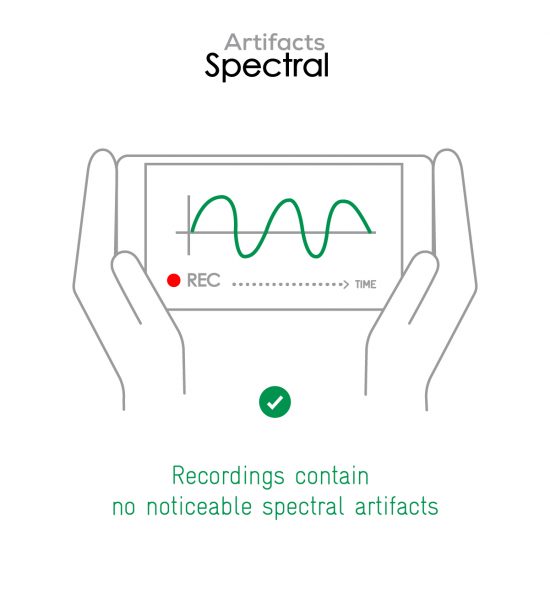
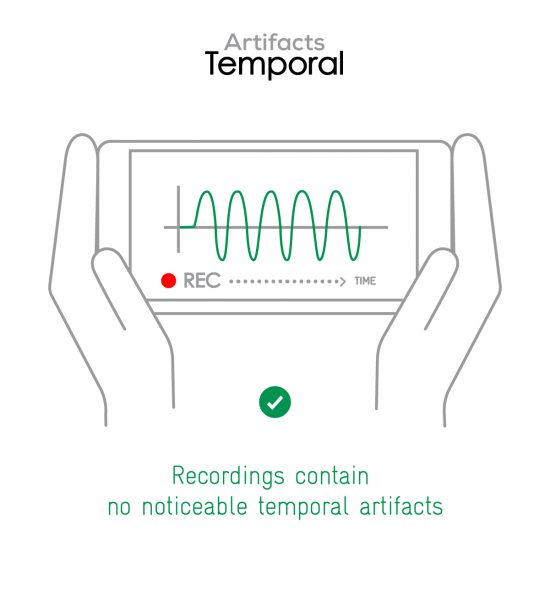
The iPhone 13 Pro Max presents a very interesting and well-implemented feature: when the phone is held with one hand only, the DSP successfully compensates the partial occlusion induced. Further, when it is held with both hands, voices remain perfectly intelligible, only mildly indisposed by a slight loss in the spectrum’s extremes.
In this audio comparison, you can listen to the way this smartphone handles wind noise relative to its competitors:
Compared to the best competitors wind noise is more audible on iPhone 13 Pro Max audio recordings. This is especially true when recording with the memo app.

Background
Apple iPhone 13 Pro Max
166
Background evaluates how natural the various sounds around a voice blend into the video recording file. For example, when recording a speech at an event, the background should not interfere with the main voice, yet it should provide some context of the surroundings.
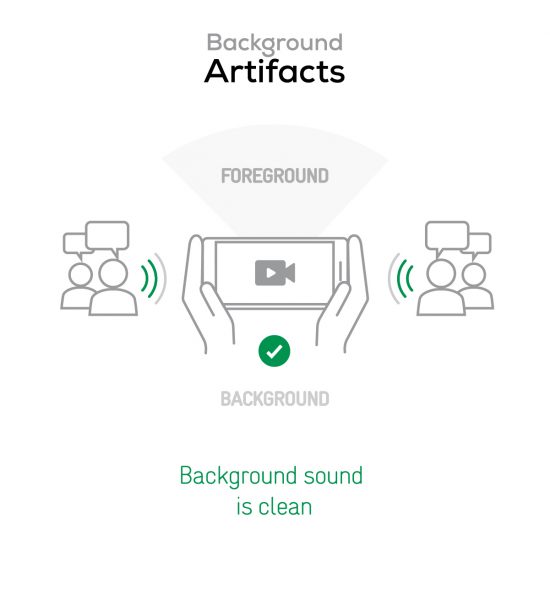
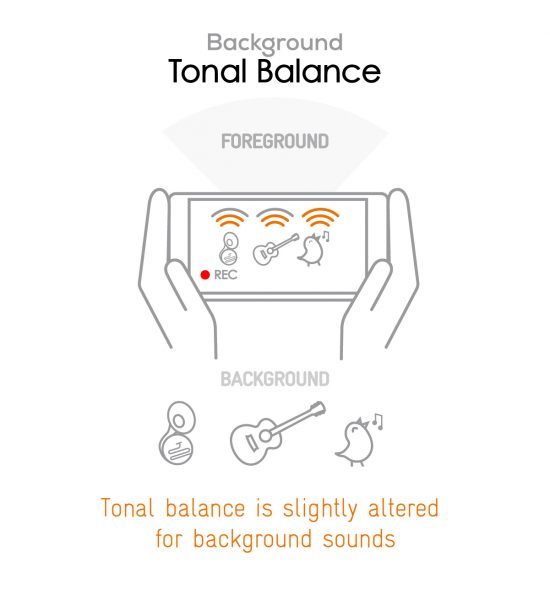


DXOMARK encourages its readers to share comments on the articles. To read or post comments, Disqus cookies are required. Change your Cookies Preferences and read more about our Comment Policy.